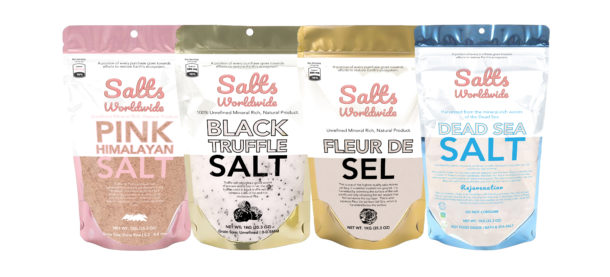Fleur De Lis Sea Salt comes in different varieties. Some varieties are more refined, while others are harvested from a much older deposit. This type of salt tends to have a coarse grain structure, often with a coarse graining effect. It is commonly harvested manually in the high layer of the salt pan by hand. Because of this, production is very limited and the price is usually quite high.
Fleur De Lis is a sedimentary rock that is mostly composed of silica and calcium carbonate. It was named after the region where it is found, but the name has stuck. It got its name from the French word “fleure”, which means flowing water. The grains in fleur de sel crystallize as water evaporates over the surface of the salty surface. When this happens, the crystals develop into tiny needle-like structures. It looks like tiny sea shells or crystal drops when seen under magnification.
When fleur de sel is added to water, it reacts with electrically charged sodium ions in the water to produce the distinctive fleur de sel color. The mixture with the color is very concentrated and may take some time for the mixture to become fully mixed. This makes this kind of salty seasoning highly sensitive to high temperatures and hence must be stored in air-tight containers when not in use. Most chefs prefer this kind of salty seasoning to their favorite sauces or soups.
A variety of grains are grown in varying climate conditions; however, the fleur de sel grain is considered to be the most delicate and versatile variety of this type of salt. Most varieties have a soft, fluffy texture and very low moisture content. Its use in soups and stews impart a unique flavor to the dishes it accompanies. It gives a tangy, salty twist to the dishes.
Because of its delicate flavor, fleur de sel is used to add a delicate touch to sauces and soups. It can be combined with a variety of herbs including Rosemary, thyme, basil, oregano, parsley, cilantro, chives, tarragon, etc. in a variety of ways to add a delightful flavor and fragrance to these dishes. The grains are generally harvested in the Atlantic regions where they grow abundantly; however, some varieties can be found as far south as Mexico.
Fleur de sel is one of the finest spices in the world. Its flavor and aroma have been coveted for centuries. Many people consider fleur de sel to be a luxurious seasoning and is highly sought after in culinary circles. Although it’s most commonly associated with the dishes involving foods and sauces, it also is often added to baked goods and candies. It even has an association with certain religions such as Catholicism and Eastern Orthodox Christianity.
Another popular variety of fleur de sel is fleur de noir. This product is usually made from refined white flour. It’s most commonly used in French cooking, but can also be found in many other cuisines. This type of salt is most delicate of all the varieties of salt available, because it has a very delicate and subtle flavor that is almost never overpowering. It adds a delicate flavor to foods and beverages, while maintaining its own flavor and aroma at the same time.
One final variety of fleur de sel is fleur de noir de noirs. This salty variety is made exclusively from smoked musk deer’s antlers, which has a very distinct taste that some find quite delicious. It’s a type of condiment that goes best on lighter foods such as breads and fruits, although it can be used in a wide variety of dishes due to its delicate flavor. Like all sea salts, it maintains its own natural flavor and aroma, as well as improving with age.


Recent Comments